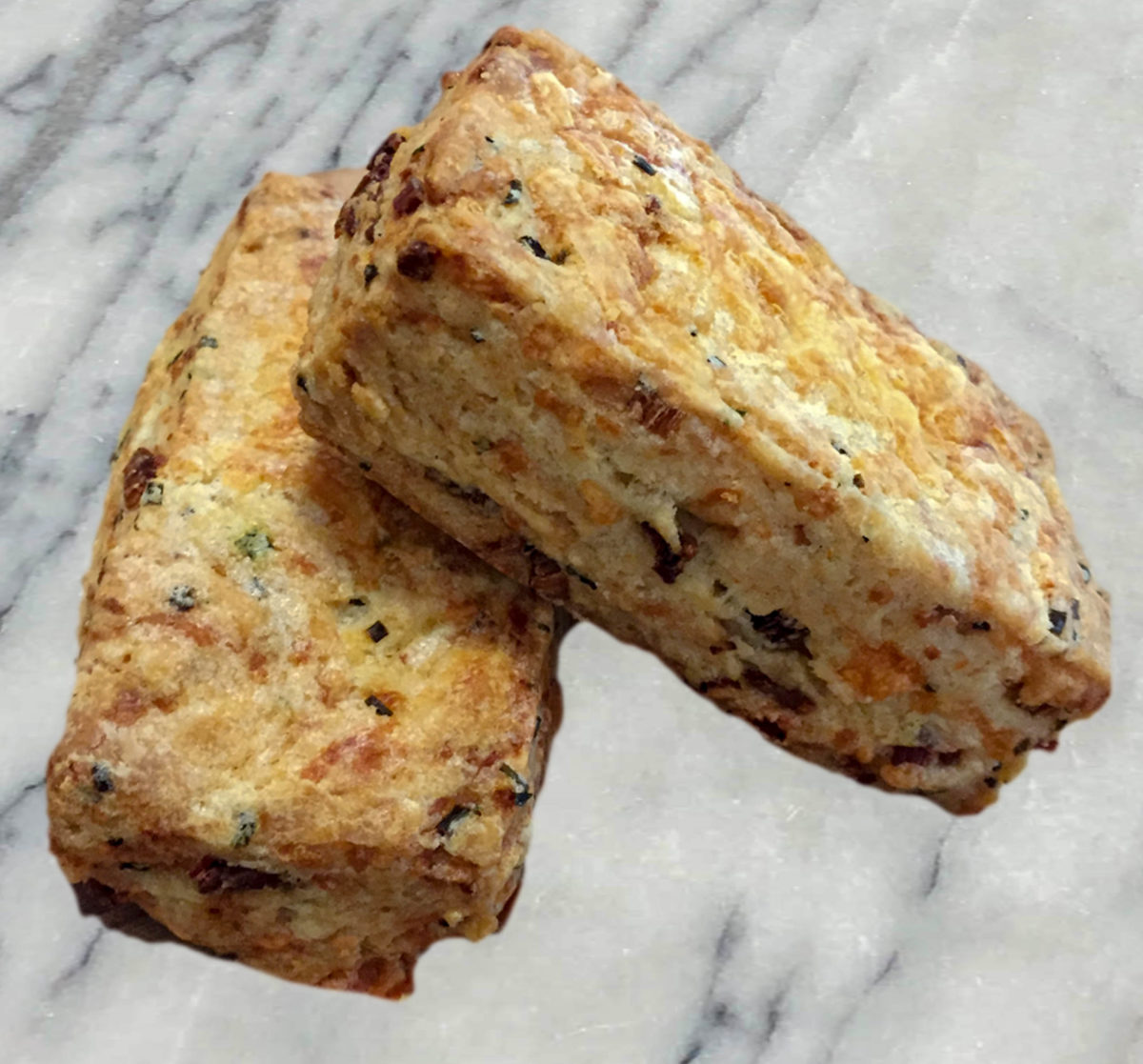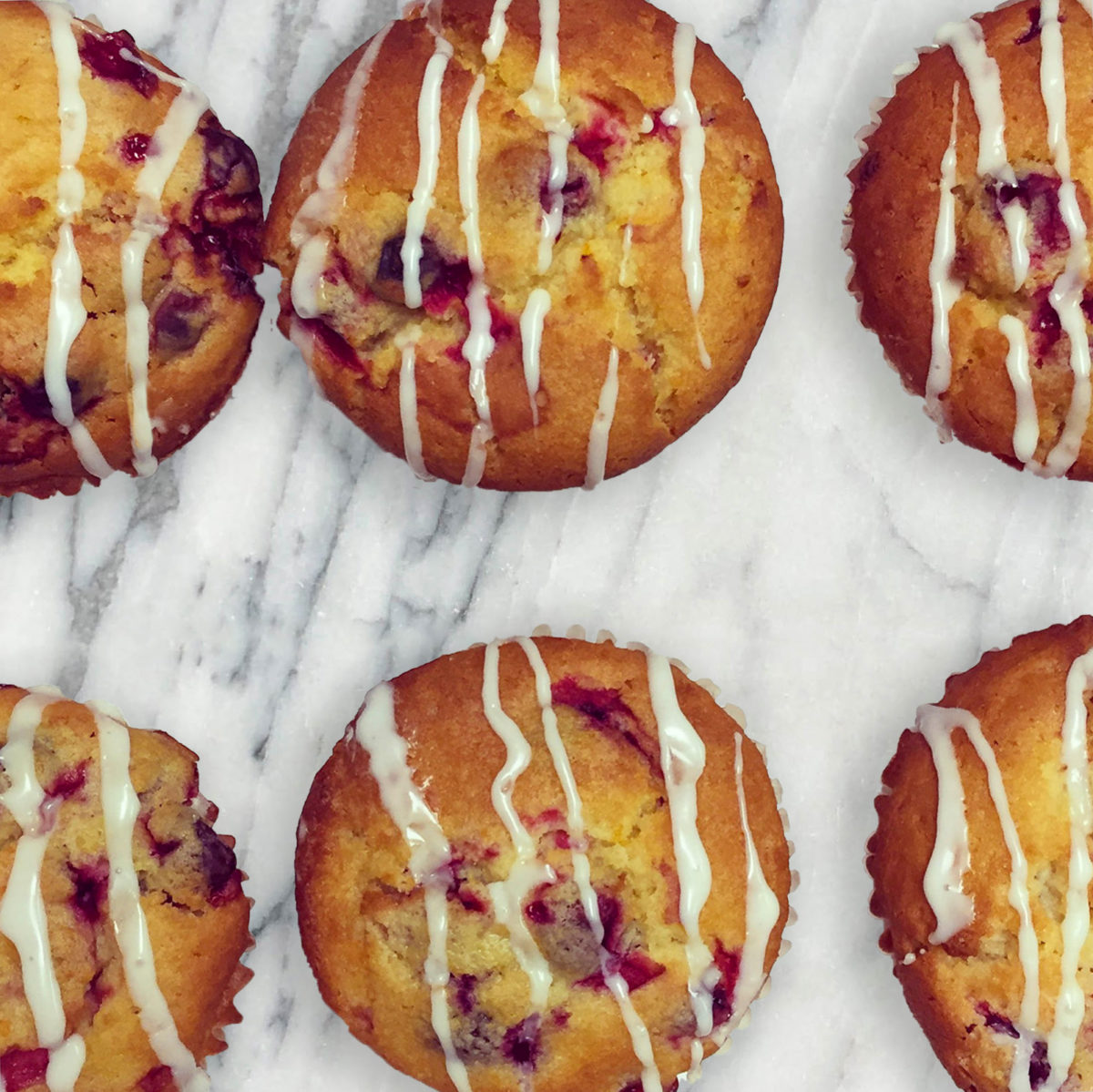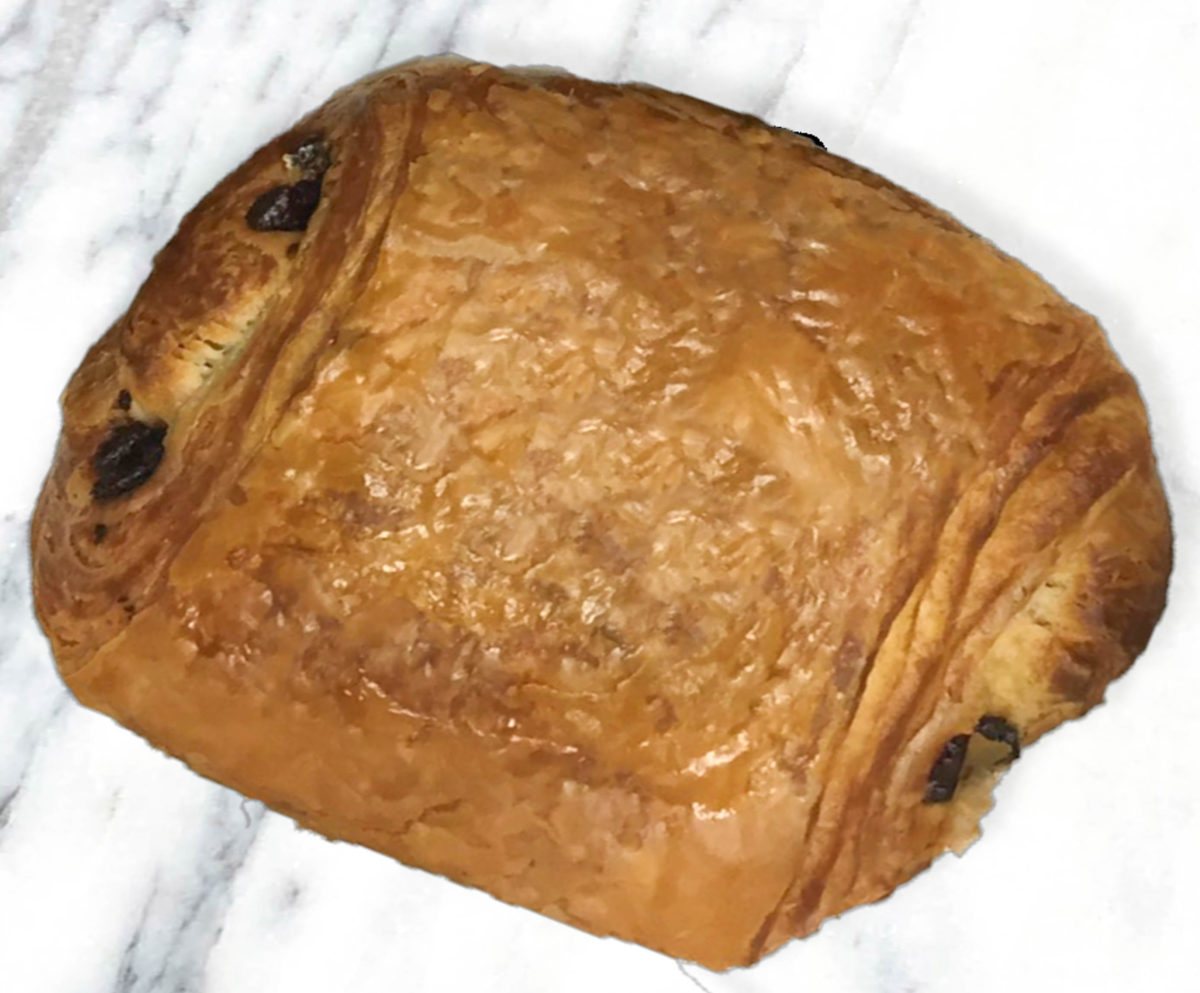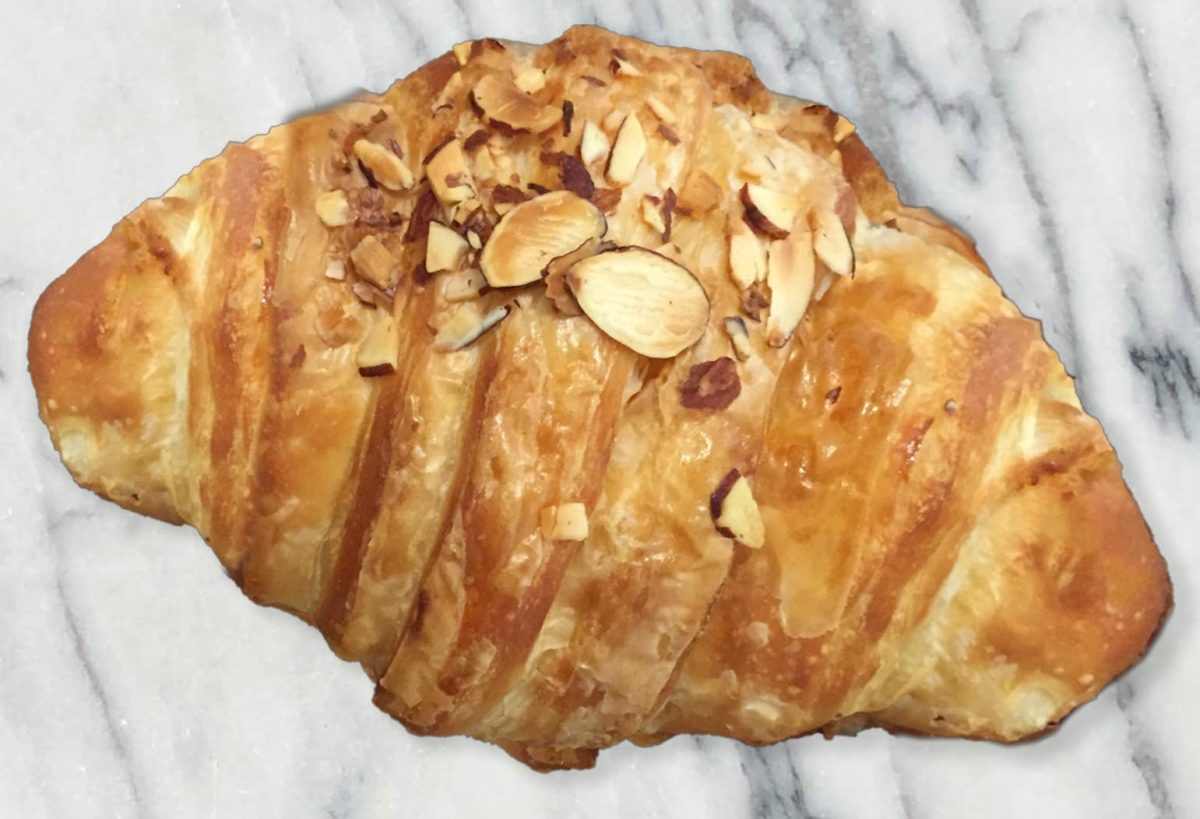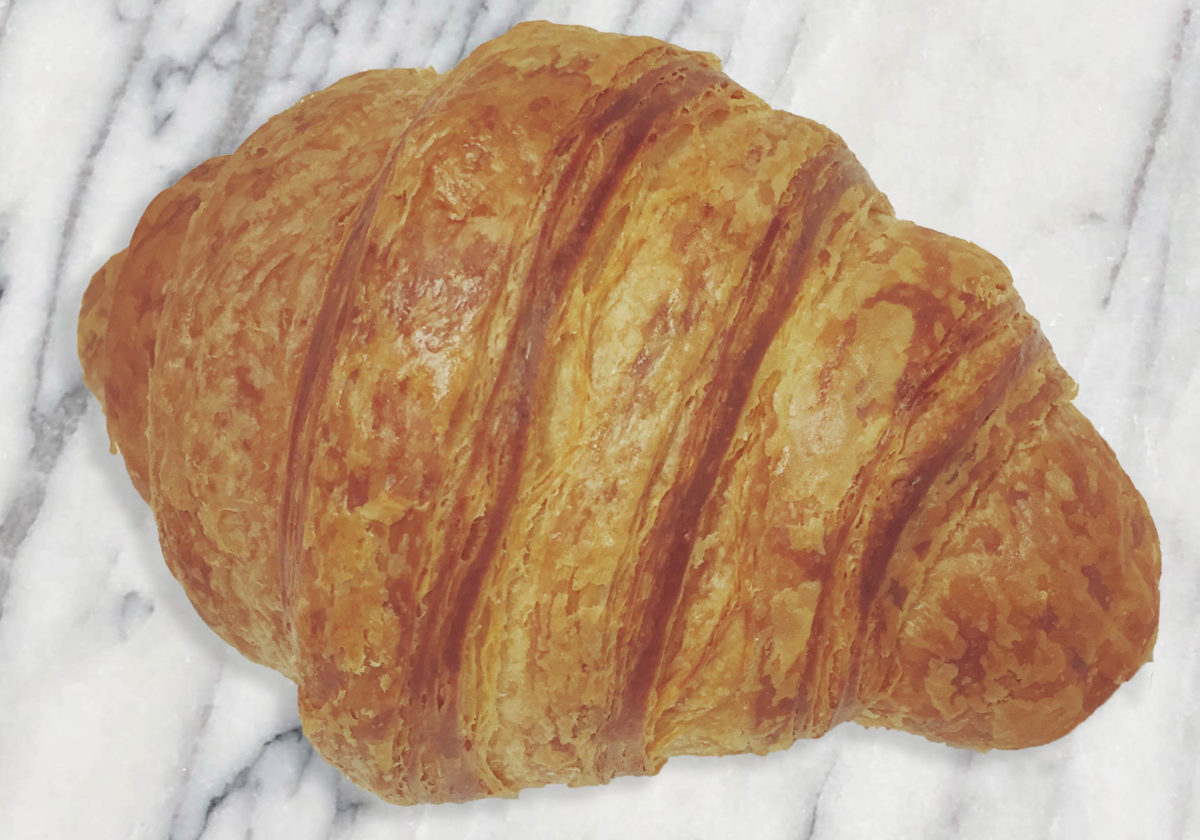These are a bit of a weekend project, but oh so worth it.
The butter is important in this recipe. Along with European butter making the croissants taste better, the higher percentage of butter fat makes the butter block more pliable.
The croissants can be shaped and frozen, unproofed, in a single layer on a parchment lined baking sheet. To bake, let them come to room temperature and proof 3 hours.
Croissants can also be frozen after baking. To eat, thaw at room temperature and reheat in a 175C/ 350F oven for 7 minutes.
Makes 11
Dough:
272 g/ 9 â…” oz Whole Milk
408 g/ 14 â…“ oz Bread Flour
4 g/ 1 â…“ teaspoon Instant Dry Yeast
10 g/ 1 ½ teaspoons Salt
40 g/ 1 ⅜ oz Sugar
40 g/ 1 ⅜ oz European Butter, unsalted, soft
Roll-In:
226 g/ 8 oz European Butter, unsalted, softened but still cold
Preparing the Dough
To make the dough, place milk (first), then flour, yeast, salt, sugar, and butter in a mixer with a paddle attachment. The yeast and salt need to be added at opposite sides. Mix 4 minutes at low speed. Scrap sides of bowl. Mix 4 minutes at medium speed.
Turn dough onto sprayed pan. Cover and ferment at room temperature (24C/ 75F) until doubled in volume, about 2 hours.
Fold over the dough and spread it into a rectangle 38 by 30 cm/ 15 by 12 inches on floured parchment. Wrap and retard in fridge overnight.
The next day, on parchment paper, spread butter to 28 by 24 cm/ 11 by 9 ½ inch rectangle, pounding with a rolling pin if necessary. Place in freezer about ten minutes, depending on room temperature.
Remove butter from freezer and make sure it is pliable (bends without breaking). If it is not cold enough to work with without it melting put it back the freezer for a few more minutes. Conversely, it might need to pounded with the rolling pin if it’s too stiff.
Remove dough from fridge. Make sure it still measures 38 by 30 cm/ 15 by 12 inches. If it has risen out of shape roll over it a couple of times with a rolling pin.
Lock in butter with a letter fold: Visually divide dough lengthwise into thirds as if you were folding a business letter. Place butter on the top two thirds of the dough, leaving 1 inch gap from edges. Fold the empty bottom third over the center third of the dough, covering the butter. Then fold the top third of the dough with the butter down over the center. Pinch together the seams along the bottom and sides of the dough. Roll 3-4 times gently across the top to help seal the seams.
Cover and rest in fridge 30 minutes.
Next administer a book turn: Visually divide the dough into quarters. Fold the two short edges in toward the center, leaving a bit of space between them. To finish, fold one side over the other, like closing a book.
Cover and rest in fridge 30 minutes.
Finally administer another letter fold.
Rest in fridge, covered, before forming for 2 hours, or overnight.
Forming & Baking
Roll dough into rectangle 23 by 61 cm/ 9 by 24 inches.
Cut 11 isosceles triangles 23 cm/ 9 inches high and 10 cm/ 4 inches at base.
Make a small 2 cm/ ¾ inch slit at the base of each triangle. Gently stretch the triangle. Roll up from the base. Place seam side down on a parchment lined baking sheet. Curve the ends inward.
Brush with eggwash. Proof in a warm spot until doubled in size, about 1-2 hours depending on room temperature.
Put in freezer for ten minutes.
Brush with eggwash again.
Bake at 200C/ 400F, rotating halfway, until browned, about 20 minutes. Transfer to a rack to cool.

